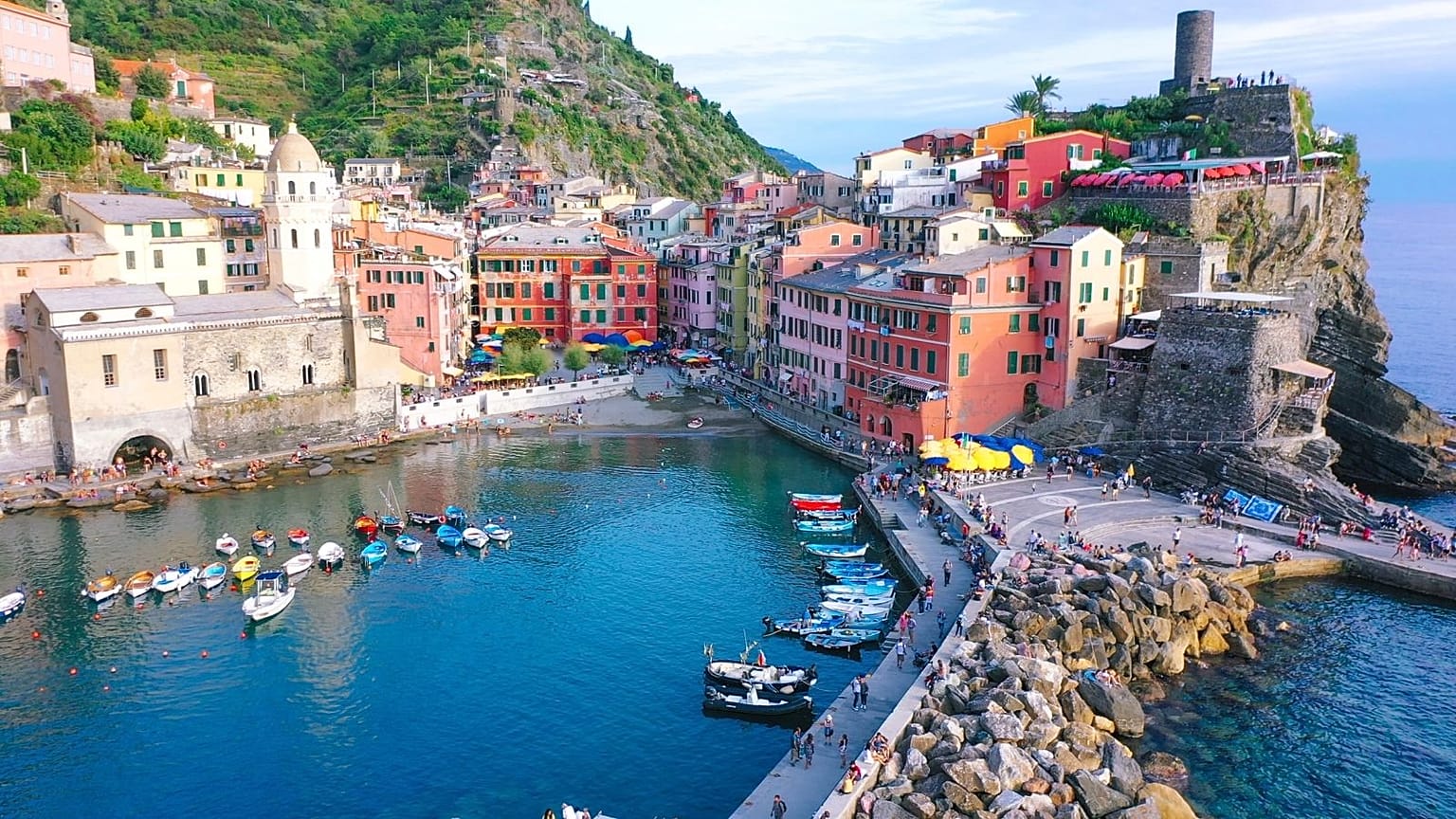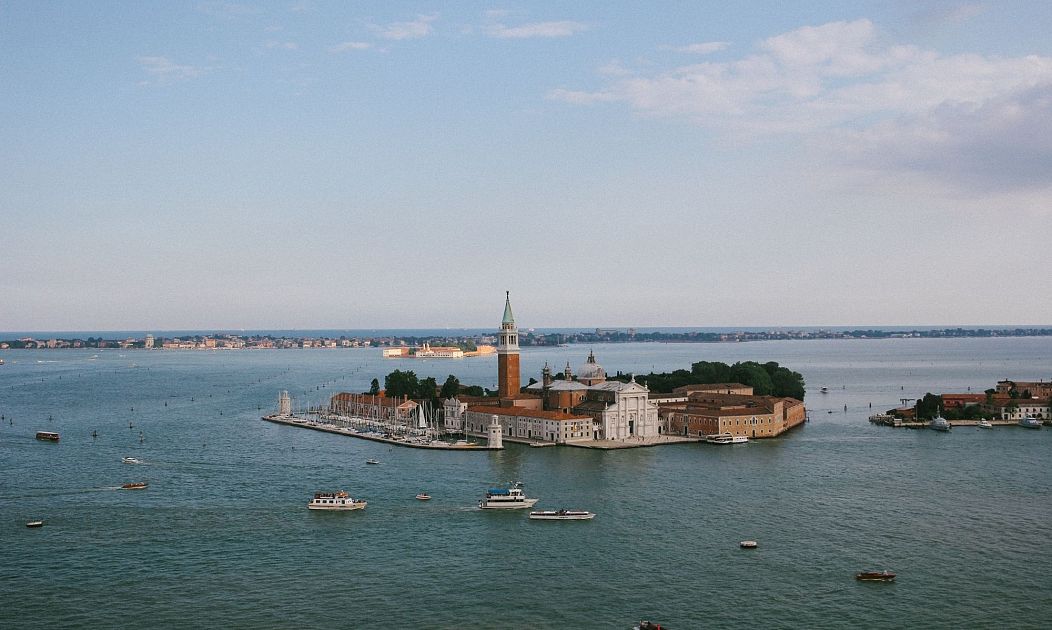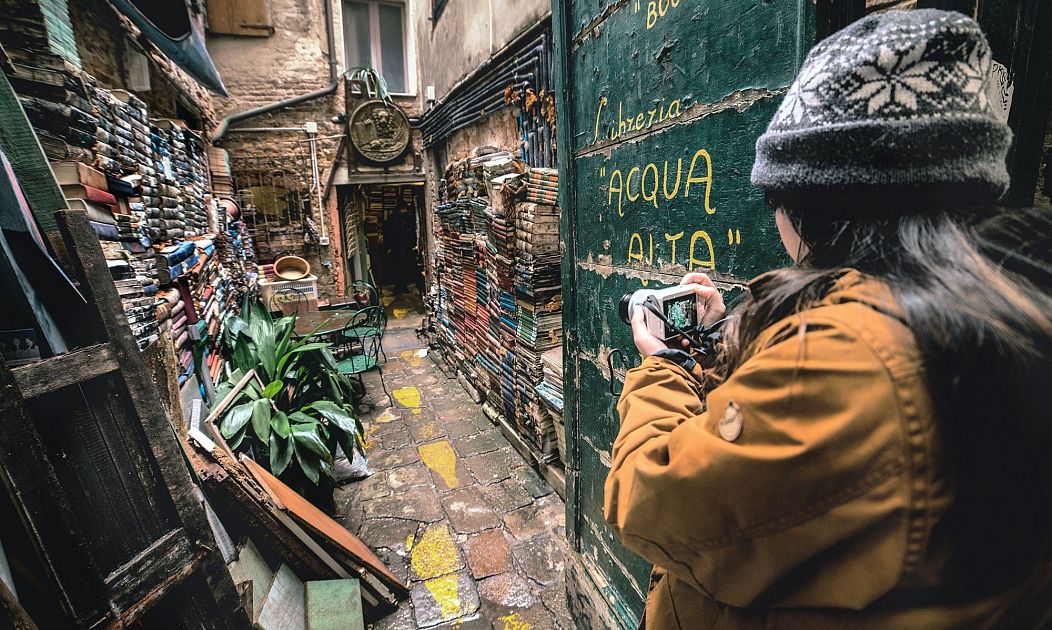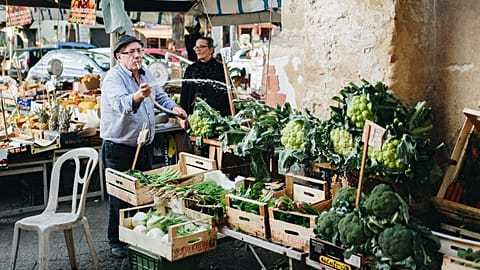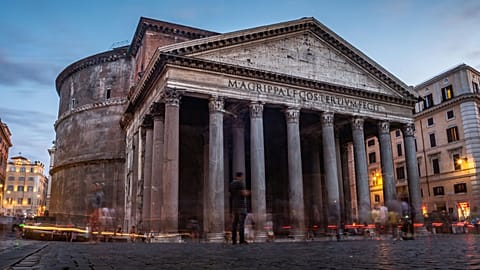Planning a trip to Rome, Florence or Venice? Euronews journalist Lillo Montalto Monella has some tips on how to travel authentically.
Italy is one of the most beloved destinations in the world, and will top millions of tourists’ summer plans this year.
There are plenty of “classic” tours taking you round “the big three”: Venice, Florence and Rome. These stunning cities should absolutely be on your travel bucket list.
But there are so many other routes, and unique experiences to be had by eschewing the pricey and well-trodden paths of these operators.
You will find the most amazing surprises by travelling like a local. I’m an Italian journalist at Euronews and this is my guide to my country. I might be biased, but I do agree it’s the most beautiful in the world.
Top 10 must-see places in Italy
Rome: The Eternal city is a vortex that manages to combine the magnificence of history with the vitality of its residents; a capital city where beauty and chaos are stacked on top of each other. But Rome is not just about its centre. Its real spirit, and its most authentic cuisine, can only be found in its working-class suburbs, known as “Borgate.” They’re still untouched by mass tourism and well worth a day of your trip.
Venice and its islands: In a normal year, you won’t find any city with a starker contrast between the daytime buzz of tourists and the absolute silence that envelops the city by night. Little tip: don’t forget there are more than a dozen islands in the lagoon, the most well-known being Torcello, Murano and Burano, where the true Venetian atmosphere and traditions still live on.
Florence: Whether you stay for a day, a weekend or longer, make sure you don’t miss the Uffizi Galleries, with its beautiful collection of ancient sculptures and paintings. On the other side of the Arno river, head to the Pitti Palace, the Boboli Gardens and the Michelangelo square which has an incredible panoramic view over the city.
Naples: Every little detail, every street corner, every balcony here tells a story. Naples is a city known for its joyful hospitality and the warm-heartedness of its inhabitants. Present no resistance, and let Naples and its Mediterranean cuisine blow your mind away.
Pompei ed Ercolano: The ashes of the Mount Vesuvius eruption stopped time on a morning in 79AD: the two cities crystallised in time are a unique snapshot of what life was like two thousand years ago.
Cinque Terre OR Dolomiti: Take the perfect selfie in these picturesque fishing villages featuring pastel-toned buildings, windy streets, and turquoise marinas. If you are more of a mountain person, head to the iconic mountain range of Dolomiti for the perfect week of relaxation, hiking or skiing.
Palermo: Begin your trip on the island of Sicily in the city dubbed the capital of the Mediterranean: a noisy, elegant, charming (and decadent) place where Baroque and Norman monuments stand alongside Arab domes and Byzantine markets. Not to mention its amazing street food, obviously.
Matera: This town carved in the rock, in the deep south of Italy, was chosen as European Capital of Culture in 2019. It's one of the oldest continuously inhabited cities in the world, and you can still visit some of the apartments carved in the rock where people used to live until the 1950s.
Big lakes tour: Spend at least a week on a road (or bike) trip that includes the most famous Italian lake, the Lake of Como, but also the stunning Lake Maggiore, Lake D’Orta, Lake Garda and Lake Iseo. They all revolve around the axis Milan-Verona, two of the unmissable stops for your Italian journey.
Maddalena Archipelago, Sardinia: You don’t need to go to the southern hemisphere to find sandy white beaches and crystal clear waters. You can rent a boat cheaply and drop anchor in one of the many spots of this emerald archipelago, a paradise for divers.
Free things to do in Rome, Venice and Matera
Here’s three easy things you can do while visiting some of the 10 must-see places:
When in Rome, head to the Aventine hill (walk or catch a bus) where you will find a large square and a wall of white stones. It belongs to the Priory of the Knights of Malta. You will spot a queue of people eager to look through the keyhole of its green door. When it’s your turn, look through and you’ll see in the distance the dome of St. Peter’s Basilica, perfectly framed between rows of trees. The best time to visit is in the morning when the sun rises over the city.
When in Venice, don’t miss the chance to pop into the Acqua Alta library, one of the most beautiful bookshops in the world. Rather than the traditional shelves or racks, books are displayed in bathtubs, bins and even in a full-size gondola, all designed to protect them from the water in case of high tides. In the internal courtyard, books are piled up to form a staircase: climb it to have a unique view over bridges and canals.
When in Matera, rent a car or take a bus to Alberobello, Puglia’s Trulli town. These conical-roofed whitewashed structures are listed as a UNESCO heritage site. Once homes of small landowners or agricultural workers, they have been preserved and restored to resemble a little Smurfs' village. And, hey, they also serve as accommodation for visitors.
When to visit Italy
Despite the intense summer heat, August is the best time to visit the big touristy cities like Rome because they are deserted by their residents.
But apart from that, my favourite month for an Italian vacation is without a doubt September. Holiday season in Italy is over, prices are cheaper and the weather is still pleasantly warm.
If you are headed to the south of the country, you will still be able to enjoy warm temperatures in October and even November.
The best way to experience Italy
A very efficient high-speed rail connects the big cities (Turin, Milan, Bologna, Venice, Florence, Rome, Naples etc.), and journey times are short. You could sip a ristretto coffee in a bar in Milan in the morning and have an aperitivo on a rooftop in Rome in the evening: the two cities are just three hours apart by train.
If you are planning to spend a few days off the beaten track and outside the big cities, my advice would be to rent a car. In some regions, such as Sicily and Sardinia, the train infrastructure is old and you don’t want to rely on public transport.
The Northern part of the country is generally better set up for touring cyclists, with more infrastructure, camping and cycle lanes, especially in the regions of Veneto, Trentino-Alto Adige, Friuli-Venezia Giulia, Emilia Romagna, Lombardy and Piedmont, where you can follow the network of rivers and discover the most authentic Italian countryside.
Essential places that you won’t find in any guidebook
Parco delle foreste casentinesi
In this natural park tucked between Bologna, Florence and the Adriatic sea there is no shortage of panoramic ridges, waterfalls, religious sanctuaries, ancient forests and old mule tracks. The reserve boasts thermal pools and activities for children, making it a secret gem for families looking for the perfect spot to reconnect with nature.
Giara di Gesturi
Sardinia is not just about its pristine beaches and waters. Its mainland is as fascinating as its coastline. The volcanic plateau, right in the centre of the island, is home to a wild and dry ecosystem. It can be explored on horseback - riding the only species of wild horse in Europe - by bike or on foot. Its landscape is punctuated by remnants of megalithic edifices (known as Nuraghe) and by high-quality “agriturismi”, or holiday farms. Here you’ll be treated to dishes of the pastoral tradition: lamb, sheep and the very emblem of Sardinian cuisine: the piglet.
Parco del Delta del Po
Hop on board a boat safari on the delta of the River Po, Italy’s longest river flowing across the north’s flatlands. This immense lagoon, with its slender tongues of land immersed in salt flats, offers endless possibilities for birdwatchers, cyclists and photographers. It is one of the most important wetlands in Europe, marked by extensive land reclamation campaigns over centuries, ideal for slow tourism lovers. Don’t miss the savoury dishes made of eels (cut in pieces, grilled or pickled in salt and vinegar) at the market of Comacchio, a town built on dozens of small islets joined by bridges.
The best day trips
Climbing Mount Etna
You can climb to the top of the highest active volcano in Europe, reaching as high as 3000 metres above sea level. Small organised groups can hop on a cable car, or take a full or half-day hike on its burnt lands. You’ll see villages destroyed by eruptions, extinct craters and volcanic caves. You can even ski or snowboard down on rivers of ancient lava, with the sea sparkling on the horizon.
Visiting the real castles of Romeo and Juliet
We all know the balcony in Verona associated with the star-crossed lovers. But legend goes that the famous love story is in fact inspired by two castles not far away from Verona, in the province of Vicenza. The two picturesque fortresses look at each other from the top of two hills in the town of Montecchio Maggiore. While you are there, travel south-east for less than an hour to the medieval town of Arquà Petrarca, named one of the most beautiful villages in Italy.
Wine and truffle tasting in Langhe e Monferrato
The vineyard hills of Piedmont, Langhe-Roero and Monferrato have UNESCO World Heritage status. Autumn is the best season to visit these sweeping landscapes, blessed with an abundance of wine, truffles and hazelnuts. Plenty of opportunities for wine and cheese tasting, going truffle hunting or visiting food markets in picturesque medieval towns.
The foods you have to try
The richness of Italian cuisine is exemplified by the ancient rivalry between two types of stuffed, fresh pasta: tortellini and cappelletti, both originally from the Emilia-Romagna region. Tortellini belong to the Emilia area that surrounds Bologna and Modena, while cappelletti are the coastal answer to tortellini in the territory of Romagna on the Adriatic coast.
This rivalry dates back to the Middle Ages, when Italy was split up into city-states, but it’s still very present today. Proponents clash over the best techniques for closing the pasta and the best fillings.
For the best cappelletti, head to the small town of Faenza, between Bologna and Rimini, and knock on the door of the Ristorante Trattoria Manueli. If you are more of a tortellini fan, head to Le Golosità di Nonna Aurora in Bologna, a family-owned restaurant serving traditional bolognese and the best tortellini in broth.
One of my favourite, unknown-to-foreigners Italian dishes is the bombetta pugliese, or “little bomb” from Puglia. It’s a roulade of pork neck stuffed with salt, pepper and cheese, originally prepared in ancient neighborhood butcher shops in an oven or a brazier. It is one of the most iconic street-food dishes, and it is available in many forms and variants not just in the Puglia region, but in a lot of other cities thanks to the historical emigration South to North.
A vegan street food choice would be the “farinata”, a chickpea tart (something between a focaccia and a quiche) baked in wood ovens and served with salt and extra-virgin olive oil. You can find it almost everywhere in the regions of Liguria and Tuscany.
Last but not least, the best snack from the no-waste “poor cooking” tradition of rural Italy: the Sicilian “pane cunzato”, a slice of bread with tomatoes, pecorino cheese, salt, anchovies, oregan, black pepper and extra-virgin oil. You don’t need any more than that to be happy.
Accommodation tips
You should definitely spend a night in an agriturismo, an independently-owned farm serving the most authentic Italian food (with homegrown ingredients most of the time) and lovely accommodation. You’ll find agriturismo everywhere, but especially in the countryside.
Hidden gems you can’t miss
When in Venice you must try the “bacaro”, a typical venetian osteria (tavern). Here you can order an ombra (glass of wine in the local dialect) and some chicheti (local tapas). If you’re extra hungry (and thirsty), try the “Bacaro tour”: pick some different bacari around the city and have an ombra and one - or more - chicheti in each of them.
Procida Island, Italy’s Capital of Culture for 2022, is well worth a visit. This tiny island, with its colourful houses and gorgeous views, is a rare gem. You can easily reach Procida in a 45 minute hydrofoil ride from Naples. It has been defined as the “most beautiful expression of the most intimate Italy, looking at the sea and embodying the philosophy of slow tourism”.
If you trust my opinion, the best Italian sunsets can be found in the far-eastern city of Trieste, a tiny strip of land at the border with Slovenia. When the sun goes down on its Gulf, surrounded by a steep escarpment coming down from a plateau, it gives you goosebumps. Trieste, former port of the Habsburg empire, was loved by Irish writer James Joyce for its unique cosmopolitan and pan-European atmosphere. An atmosphere that you won’t find anywhere else in Italy.















